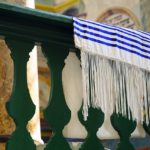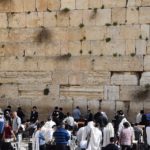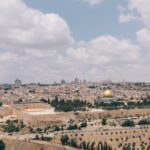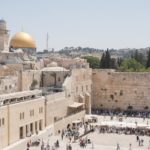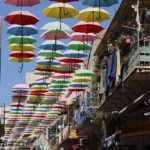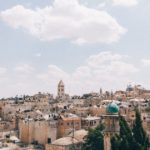Observing the Jewish Holidays in the Old City of Jerusalem
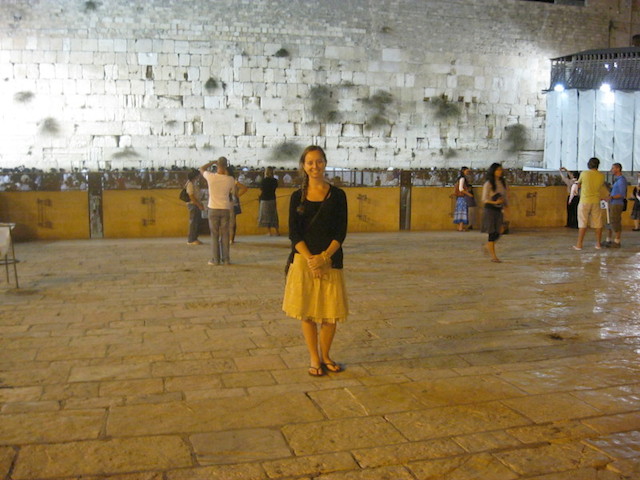
I was raised in a culturally Jewish home and have always identified as Jewish. While I always knew that my roots were important, my family was never religious by any measure. We celebrated Passover and Chanukah at home, but that was about it. When I spent a college semester in Israel, I had the opportunity to keep several Jewish holidays in Orthodox Jewish tradition.
By visiting observant families in the Old City of Jerusalem for Shabbat and holiday meals during Sukkot and Chanukah, I was able to see firsthand what it was like to commemorate a holiday in a more traditional way than I had ever seen before.
On Yom Kippur, the Day of Atonement and perhaps the holiest day on the Jewish calendar, I knew that I wanted to go to synagogue services. If there was a time to go, it was now; it was only fitting to go on such a special day in Israel. My classmates and I walked across town through the empty streets–Israelis don’t drive on Yom Kippur–to an Orthodox synagogue.
The service was entirely in Hebrew, so despite not understanding much throughout the several hours of prayer, it was so touching and rewarding to be a part of such an important ceremony surrounded by religious Jews.
We came from the same ancestors yet lived a completely different lifestyle.

Although I was celebrating a holiday of my own faith, following it in a more traditional way was a whole new ballgame. After Yom Kippur, the celebrations continued. Observing the holiday of Sukkot in the Old City of Jerusalem was one of the most magical and spiritual experiences I had ever had up until then. The decorated sukkot, or huts, throughout the charming, ancient Old City made for a beautiful sight. Because I had never observed the holiday before, or seen it observed, it was lovely to be a part of the festivities of such a gorgeous holiday.
A few minutes’ walk from the Western Wall plaza was the Orthodox women’s hostel where I stayed while in Jerusalem for the holiday. There, no guests used electricity on Shabbat or holidays. Everyone dressed modestly at all times — a huge adjustment for me.
Observing the Jewish Holidays in the Old City of Jerusalem.
Despite the sweltering Israeli heat of the late summer, I dressed in long skirts or pants and covered my shoulders every day as was appropriate in my Old City surroundings and the homes I visited for holiday meals. My hosts and I all came to the table with an open mind; I sought to learn everything I could about their way of life. We came from the same ancestors yet lived a completely different lifestyle.
One of the first experiences I had with that different life was during that same stay in Jerusalem’s Old City for the Jewish holiday of Sukkot. The family who hosted my friend and I for dinner lived within view of the Western Wall; I could see the top stones of the Wall from their front doorstep. They built a huge, extravagant, beautiful sukkah outside on their front porch where we gathered for the meal. Which was much more like a massive feast.
Before eating, we shared prayers. I did my best to follow along and understand. I learned “netilat yadayim,” or to perform the ceremonious washing of the hands before eating bread.
Because it was a holiday, Orthodox tradition forbade the use of electronics, including cameras, so I took mental snapshots of everything. The table was beautifully set with prayer books at each place. Before eating, we shared prayers. I did my best to follow along and understand. I learned “netilat yadayim,” or to perform the ceremonious washing of the hands before eating bread.
Even when I couldn’t follow the prayers (which was most of the time), it was inspiring. It was exciting and extremely moving to be a part of something so meaningful. In addition, being treated like royalty in a stranger’s home, especially during a holiday, was a display of cultural hospitality I wasn’t quite accustomed to.
My Old City Sukkot experience was incredibly enchanting. For the first time ever, I lived under an Orthodox roof. I was surrounded by people respecting and observing ancient customs during a holiday. At one of the holiest places in the world. The gravity of participating in such festivities in that place was truly astounding.
Being treated like royalty in a stranger’s home, especially during a holiday, was a display of cultural hospitality I wasn’t quite accustomed to.
Over the course of my time living in Israel, I learned firsthand about the traditions of my ancestors. In fact, I was able to practice many of them. I was reminded of the sheer meaning of religion on a weekly basis when it was time for Shabbat, when on Friday afternoon, retail shops close, traffic quiets, mass transit halts and people make their way back home for the start of the day of rest.
Until Saturday at sundown, most of the country is closed for business. When I had errands to run on the weekend, I either finished them on Friday morning or didn’t get them done at all.
Now that I’m back to the secular lifestyle I’ve always known, religious holidays come and go. I often miss the meaning and symbolic gestures of celebrating them in a more traditional way. Especially in the place where they originated. But the experiences I had in Jerusalem’s Old City were something so unique and amazing that I hope to have again. Including in different places, honoring different religions’ customs.
Observing the Jewish Holidays in the Old City of Jerusalem Related Reading
Have you traveled to the Old City of Jerusalem, Israel? How was your trip? Email us at [email protected] for information about sharing your experience and advice with the Pink Pangea community. We can’t wait to hear from you.
Observing the Jewish Holidays in the Old City of Jerusalem photo credits: Lili S. Have you experience the Jewish holidays in the Old City? Comment below and let us know how it went! We can’t wait to hear from you.

